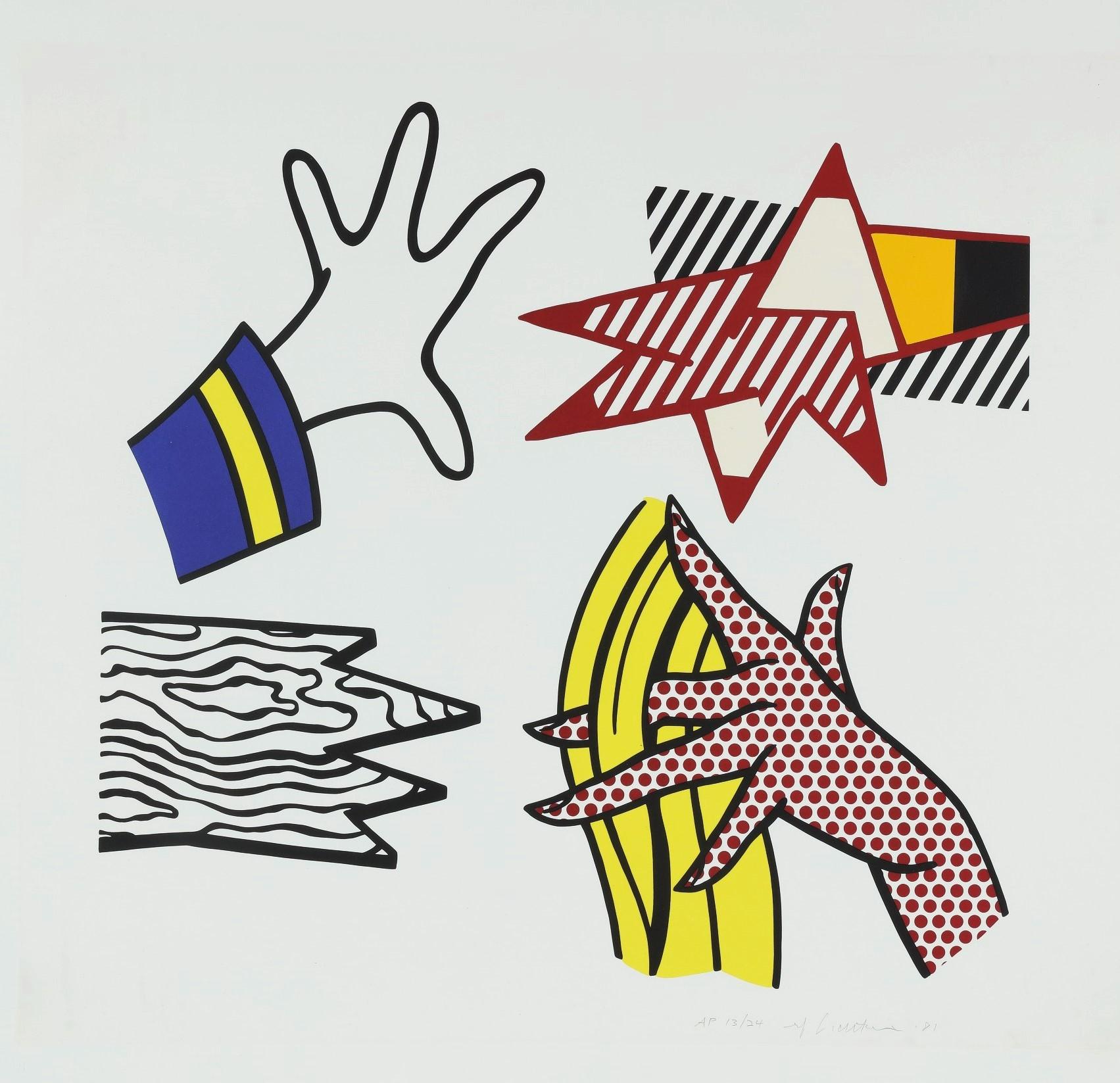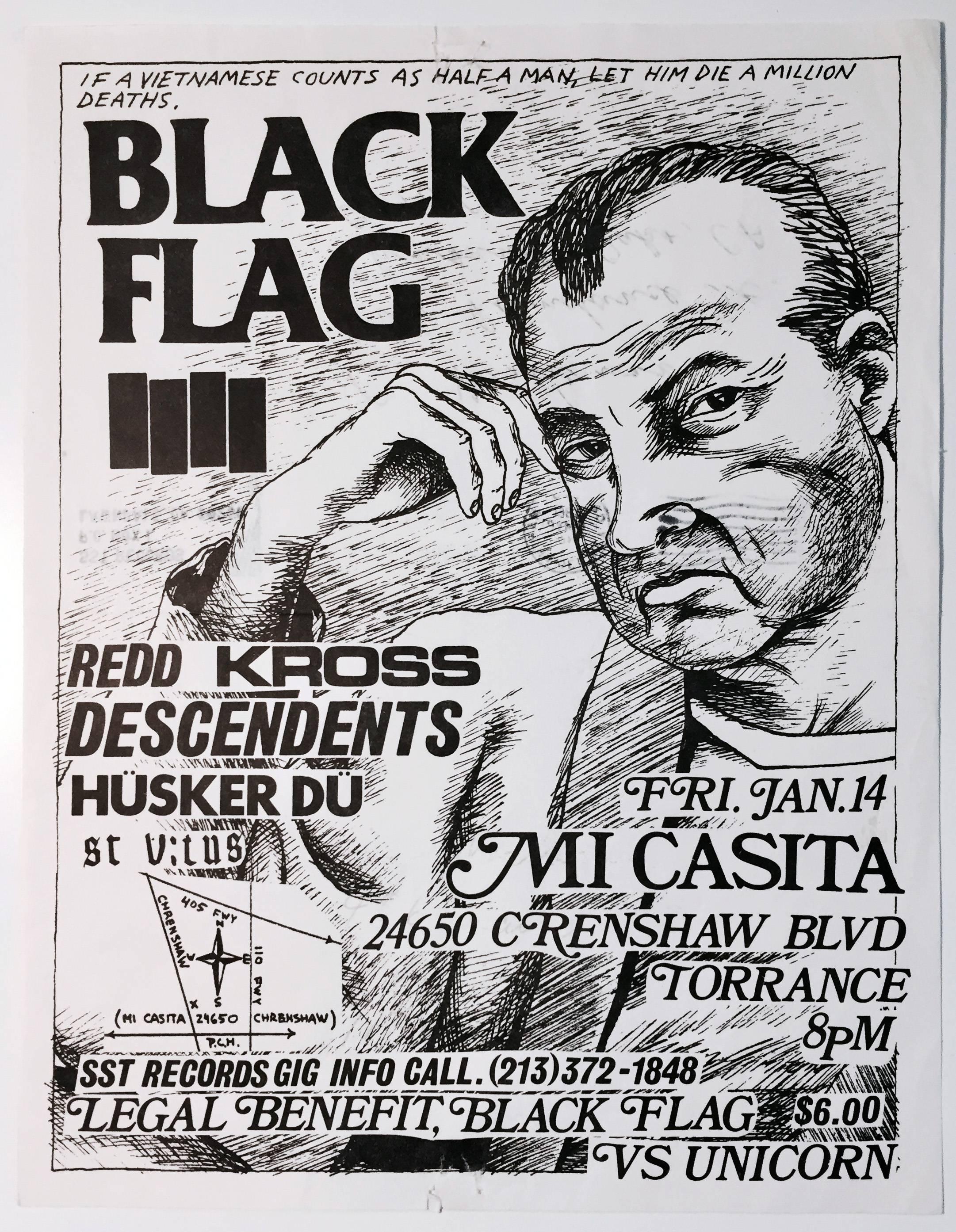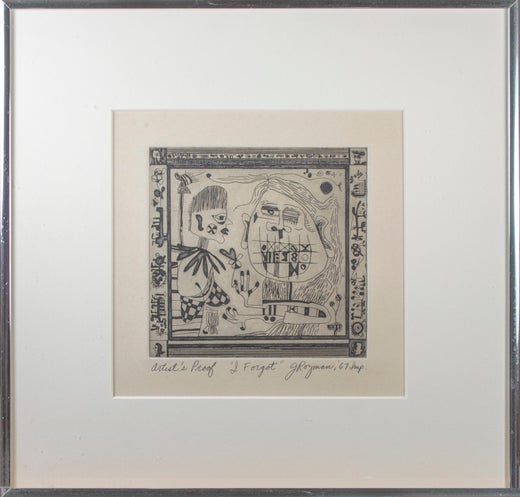Joseph Rozman"Dahlke-Rozman, Exhibition Poster, " Original Color Lithograph by Joseph Rozman1967
1967
About the Item
- Creator:
- Creation Year:1967
- Dimensions:Height: 20.375 in (51.76 cm)Width: 13.75 in (34.93 cm)
- Medium:
- Movement & Style:
- Period:
- Condition:
- Gallery Location:Milwaukee, WI
- Reference Number:
Joseph Rozman
Joseph Rozman was born on December 26, 1944, in Milwaukee, Wisconsin. He was the first artist to have a solo exhibition at the David Barnett Gallery in 1967, 1969 and again in 1971. Rozman received his BFA with honors in 1967 and MFA in 1969 from the University of Wisconsin-Milwaukee. He later became a professor at Mount Mary College. His zany style portrays his spontaneous blending of ancient and personal symbols influenced by Egyptian art and the paintings and drawings of Paul Klee, his free experimentation with varied materials and processes, and his delight in color and texture. Carrying the credo of "Art is fun," Rozman's playful gestures recur in his richly diverse works.
- ShippingRetrieving quote...Ships From: Milwaukee, WI
- Return PolicyA return for this item may be initiated within 14 days of delivery.
- Original Lithograph Signed Pop Art Aquatic Abstract Cityscape New York Fish ReefBy Michael KniginLocated in Milwaukee, WI"Invading Knight" is an original color lithograph by Michael Knigin. The artist signed the piece in the lower right and wrote the title/edition number 200/275, in the lower left corn...Category
1970s Pop Art Animal Prints
MaterialsLithograph, Ink
- "Boldest Native" original lithograph signed pop art abstract hyperrealistic boldBy Michael KniginLocated in Milwaukee, WI"Boldest Native" is an original color lithograph by Michael Knigin. This piece features a pile of apples with abstract textures. The artist signed the piece lower right and titled it...Category
1980s Pop Art Still-life Prints
MaterialsLithograph
- "Casual Encounter" original lithograph signed abstract galaxy bright fun vibrantBy Michael KniginLocated in Milwaukee, WI"Casual Encounter" is an original color lithograph by Michael Knigin. The artist signed the piece lower right and titled it lower left. This artwork is edition number 147/300. It fea...Category
1980s Pop Art Abstract Prints
MaterialsLithograph
- "In The Clear" original lithograph signed pop art abstract seashell calm vibrantBy Michael KniginLocated in Milwaukee, WI"In The Clear" is an original color lithograph by Michael Knigin. The artist signed, titled, and dated the artwork in lower center. This piece is an artist's proof. It features a she...Category
1980s Pop Art Abstract Prints
MaterialsLithograph, Ink
- "In Real Form" signed original lithograph pop art realistic swan floral vibrantBy Michael KniginLocated in Milwaukee, WI"In Real Form" is an original color lithograph by Michael Knigin. The artist signed the piece in the lower right and titled/editioned "A/P" in the lower left with graphite. This piec...Category
1980s Pop Art Animal Prints
MaterialsLithograph
- Original Lithograph Signed Pop Art Floral Abstract Galaxy Space Celestial BrightBy Michael KniginLocated in Milwaukee, WI"Romeo's Paradise" is an original color lithograph by Michael Knigin. The artist signed the piece in the lower right then titled/editioned 130/300 in the lower left with graphite. It...Category
1980s Pop Art More Prints
MaterialsLithograph, Ink
- Study of HandsBy Roy LichtensteinLocated in New York, NYCreated in 1981 as an original lithograph with screen-printing, Roy Lichtenstein’s, Study of Hands is hand-signed in pencil, dated and numbered, measuring 31 ¼ x 32 ¾ in. (79.5 x 83....Category
20th Century Pop Art Figurative Prints
MaterialsLithograph, Screen
- Raymond Pettibon Black Flag 1983By Raymond PettibonLocated in NEW YORK, NYRaymond Pettibon Black Flag 1983 (punk flyer): Black Flag at Mi Casita, Jan. 14, 1983: Offset-printed, 11 x 8.5 in. (28 x 21.6 cm). Black & white. Handbill / flyer for performance by Black Flag, Redd Kross, Descendents, Hüsker Dü, St. Vitus featuring original artwork by Raymond Pettibon. Rare. Good overall vintage condition. Hand written notes on the reverse. Unsigned from an edition of unknown. Raymond Pettibon Black Flag: Further Background: Raymond Pettibon is the foremost draftsman of his generation, and one of America’s most important contemporary artists. Approaching “high” and “low” subject matter with equal appetite and comfort, Pettibon plumbs the depths of American sexuality, politics, subcultures, mores, and intellectual histories through themes ranging from Shakespeare to Gumby, surfers to the Bible, baseball to German Romanticism. Raymond Pettibon popularized the American punk aesthetic with his designs that captured the riotous and chaotic character of punk such as this rare Black Flag flyer...Category
1980s Pop Art Prints and Multiples
MaterialsOffset, Lithograph
- 1971 Modernist Lithograph Redhead Pop Art Mod Fashionable Woman Richard LindnerBy Richard LindnerLocated in Surfside, FLRICHARD LINDNER (American. 1901-1978) Hand Signed limited edition lithograph with blindstamp Publisher: Shorewood-Bank Street Atelier for the Skowhegan School of Painting and Sculpture 29.25 X 22 inches Richard Lindner was born in Hamburg, Germany. In 1905 the family moved to Nuremberg, where Lindner's mother was owner of a custom-fitting corset business and Richard Lindner grew up and studied at the Kunstgewerbeschule (Arts and Crafts School since 1940 Academy of Fine Arts). From 1924 to 1927 he lived in Munich and studied there from 1925 at the Kunstakademie. In 1927 he moved to Berlin and stayed there until 1928, when he returned to Munich to become art director of a publishing firm. He remained there until 1933, when he was forced to flee to Paris, where he became politically engaged, sought contact with French artists and earned his living as a commercial artist. He was interned when the war broke out in 1939 and later served in the French Army. In 1941 he went to the United States and worked in New York City as an illustrator of books and magazines (Vogue, Fortune and Harper's Bazaar). He began painting seriously in 1952, holding his first one-man exhibit in 1954. His style blends a mechanistic cubism with personal images and haunting symbolism. LIndner maintained contact with the emigre community including New York artists and German emigrants (Albert Einstein, Marlene Dietrich, Saul Steinberg). Though he became a United States citizen in 1948, Lindner considered himself a New Yorker, but not a true American. However, over the course of time, his continental circus women became New York City streetwalkers. New York police uniforms replaced European military uniforms as symbols of authority.At a time when Abstract Expressionism was all the rage, Lindner’s painting went against the current and always kept its distance. His pictorial language of vibrant colours and broad planes of colour and his urban themes make him a forerunner of American Pop Art. At the same time, he owes the critical tone of his paintings to the influence of European art movements such as Neue Sachlichkeit and Dada. His first exhibition did not take place until 1954, by which time he was over fifty, and, interestingly, it was held at the Betty Parsons Gallery in New York, a venue associated with the American Expressionists. From 1952 he taught at the Pratt Institute, Brooklyn, from 1967 at Yale University School of Art and Architecture, New Haven. In 1957 Lindner got the William and Norma Copley Foundation-Award. In 1965 he became Guest Professor at the Akademie für Bildende Künste, Hamburg. His Ice (1966, Whitney Museum of American Art) established a connection between the metaphysical tradition and pop art. He did work on Rowlux which was used by a number of pop artists (most notably Roy Lichtenstein)The painting shows harsh, flat geometric shapes framing an erotic but mechanical robot-woman. His paintings used the sexual symbolism of advertising and investigated definitions of gender roles in the media. While influencing Pop Art (Andy Warhol, Tom Wesselmann and Claes Oldenburg amongst others) his highly colourful, hard-edge style seems to have brought him close to Pop Art, which he rejected. Nevertheless, he is immortalised on the cover of the Beatles record "Sgt. Pepper’s Lonely Hearts Club Band" (1967) as a patron of the pop culture. He also did a tapestry banner with the Betsy Ross Flag...Category
1970s Pop Art Abstract Prints
MaterialsLithograph
- Flowerball Blood (3-D) VBy Takashi MurakamiLocated in New York, NYFlowerball Blood (3-D) V offset lithographs in colours, on smooth wove paper, the full sheets, all S. diameter 71 cm (27 7/8 in.) edition of 300 all signed and numbered in silv...Category
21st Century and Contemporary Pop Art Abstract Prints
MaterialsLithograph
- LITHO/LITHOBy Roy LichtensteinLocated in Aventura, FLHand signed, dated and numbered by the artist. Lithograph in colors on Special Arjomari with the Gemini G.E.L. blindstamps, Los Angeles. Sheet size 35 x 48 in. Image size 28.25 x 43....Category
1970s Pop Art Abstract Prints
MaterialsLithograph, Paper
- Tumbleweed, James RosenquistBy James RosenquistLocated in New York, NYLithograph on Black Fabriano paper. Signed by the artist and dated 1970 lower right in pencil; numbered 59/68 lower left in pencil. This electric blue image of a neon sculpture was d...Category
Late 20th Century Pop Art Figurative Prints
MaterialsLithograph





